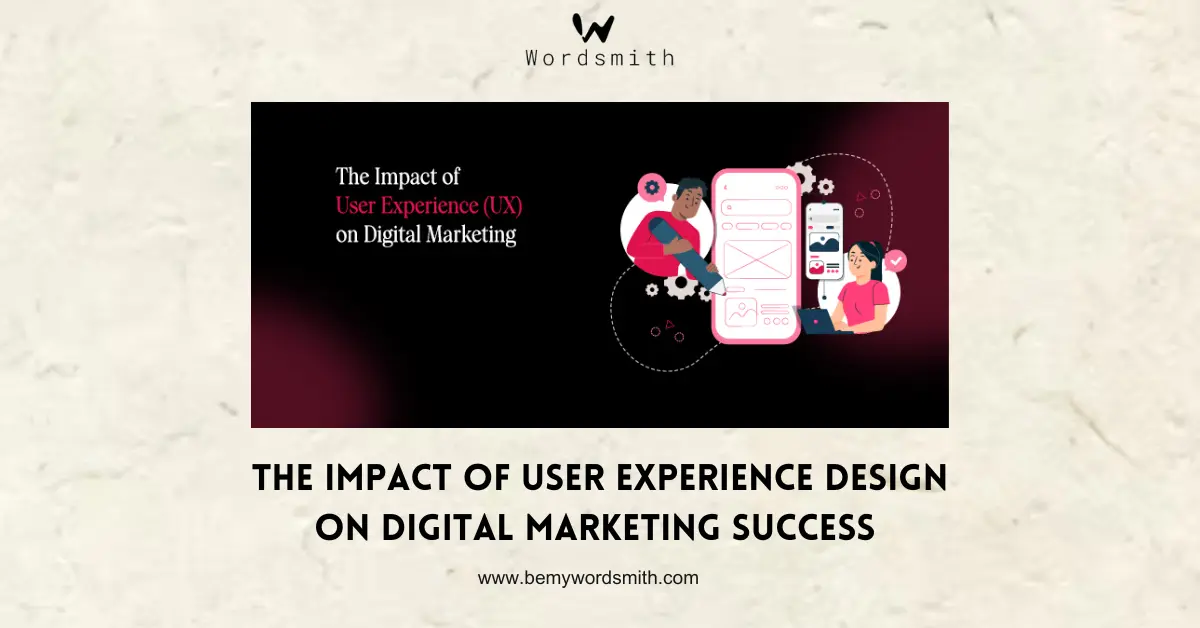The Impact of UX Design on Digital Marketing Success
Jaishree D | 23-01-2024 | 04 min read

In digital marketing, user experience refers to a person's entire product-use or consumption experience. It is the attitude that a user forms towards the product and the general impression that they have of it.
User Experience, or UX, is still frequently disregarded when developing digital marketing strategies, despite the fact that much has been written and spoken about SEO, Google Ads, other pay-per-click advertising, content management, email marketing, and social media marketing.
As to the most recent UX Statistics,
- Poor user experience is the reason behind 70% of online business failures.
- Nearly 90% of internet users are unlikely to visit websites with poor user experiences again.
- 90% of visitors will quit a website purely because of poor design.
- Just over half of businesses test user experiences.
- If they are dissatisfied with what they see on the first website, about 80% of individuals will search for another one right away.

However, when UX is enhanced, it leads to
- ROI for UX expenditures is 9,900%.
- raising KPIs by more than 80%.
- increasing conversion rates on websites by up to 200%.
- Eighty percent of internet users are prepared to pay more for improved user experience.
- According to more than 80% of customers, a smooth user experience across all devices is essential.
- Due to the increase in media consumption and mobile phone use since 2011, a growing number of digital users are choosing mobile phones as their preferred touchpoint. Mobile devices are the only tool used by 60% of internet customers to make decisions. Regardless of the user experience on a desktop, people will quickly reject a website that is not mobile-friendly and optimised for small screens.
When a user interacts with a digital marketing touchpoint—which may be a piece of content, a website, or a landing page—UX in the context of digital marketing is about creating smooth encounters and encouraging good feelings. UX and digital marketing are comparable to a bike's two wheels. For a product to succeed, it needs both. Any amount of money spent on digital marketing or creative campaigns won't matter if the product's user experience isn't centred on quickly and effectively resolving user issues.
There is much more to user experience than usability.
Digital marketers frequently mix user experience (UX) with usability alone. While usability, or making something simple to use, is a crucial part of user experience (UX), UX goes deeper to find out whether a page or piece of content can meet the unique demands of the user in order to help a product stand out in the crowded digital arena. Some significant factors that influence a user's experience are the ease of access to information on a website, the readability of the material, loading speed, ad placements, the purchasing process, the personalisation of the content, ease of navigation and accessibility, and the tone and voice of the business.
Content's pivotal importance in user experience
Not all of the stuff is obstructive. Indeed, 82% of people find reading pertinent content enjoyable. By releasing interesting material that offers a clear benefit, brands may effectively communicate their message. Well-researched and optimised content is essential for a positive user experience as well as helping websites rank organically in search engine results. Conversion rates rise and bounce rates fall when users find useful solutions to their questions in SEO-friendly content.
What is the reason for including UX enhancements in your Digital Marketing strategy?
User experience (UX) drives search engine optimisation (SEO): A well-executed SEO plan will provide the user the results that are most pertinent to their search query. While on-page optimisation, backlinks, and relevant keyword integration are all very important, providing an engaging user experience is also crucial and complements SEO. Even though the information on your landing page is perfectly optimised, if the page loads slowly, visitors will leave your website right away. Therefore, indicators such as session duration and bounce rates have a direct correlation with user experience. Search Engine Landing Page Experience (Page Experience) is a testament to UX's increasing importance in SEO. Even if you may be providing the greatest customer experience possible, without search engine optimisation youUsers won't be able to find you on Google to have that experience.
UI, or user interface: A digital product is experienced by the user through the User Interface, and the product is shaped by the user's interactions with it. Every single piece of content and feature on a website, including information architecture, navigation, call to action buttons, and search functions, must be user-friendly since every aspect of a digital product's user interface (UI) influences its user experience (UX), telling users what to do next and guiding them through the buyer's journey.
Enhancing mobile user experience: Roughly 96% of smartphone users have come across websites that aren't mobile-friendly. Over 40% of visitors depart a website that does not have an optimised mobile version that meets their expectations, and 60% of users make purchases from mobile-friendly websites. The information above is sufficient to design marketing strategies and optimise the user experience not just for one device but for several with various screen types.
Conclusion:
In recent years, there has been intense competition in the industry of digital marketing. Businesses and marketers can maintain their end-user focus and problem-solving abilities by implementing a user experience-centered approach. Because user experience adds value to any marketing approach, it must be included in the digital marketing plan. To support their User Experience and Digital Marketing strategies, companies need to have Customer Personas, User Testing, Journey Maps, Content Strategy, and Exceptional Visual Experience.
Popular blogs

Handling workplace conflicts: An HR guide
Have you ever been caught in a workplace drama and wondered, 'Why can't we all get along?' Well, you're not alo...

The Gig Economy and Its Impact on HR Practices
Before analyzing the implications for HRM practices, it is essential to understand what the gig economy is. In ...

Why is It Necessary to Hire an Interior Designer?
Planning to give a new look to your space? Need help with whether to hire a professional interior designer or D...
Submit a Comment